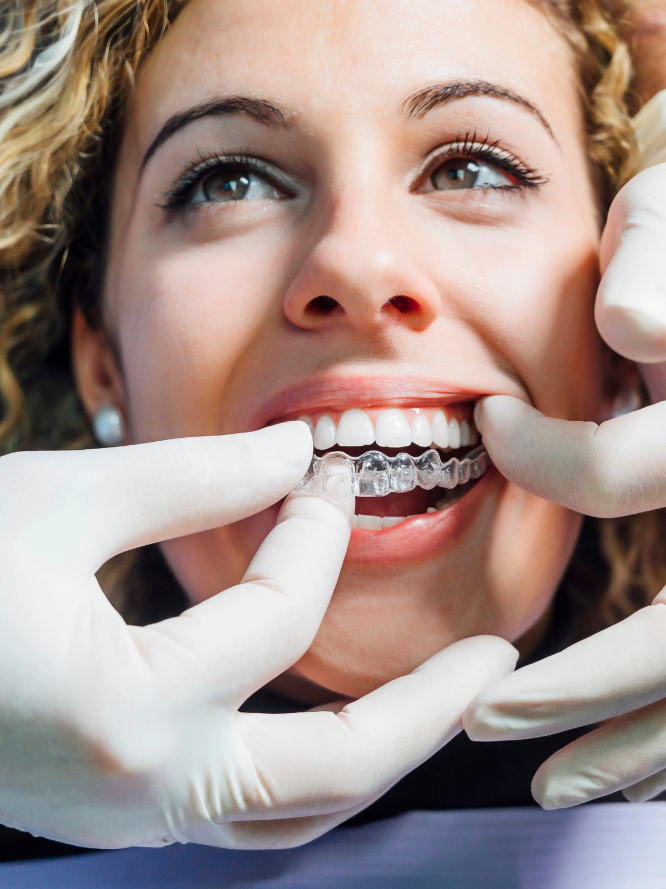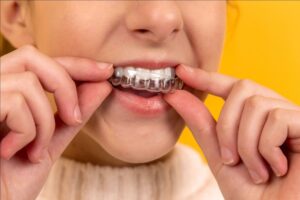Choosing between Invisalign and braces is a big decision. Both options can help you achieve a straighter smile and improve your dental health, but the right choice depends on your specific needs, lifestyle, and preferences. If you’re torn between the two, this guide will walk you through the key differences, pros and cons, and factors to consider so you can make an informed choice about getting Invisalign in West Hills.
What Are Invisalign and Braces?
Before diving into comparisons, let’s define what each option entails.
- Invisalign: This is a modern orthodontic treatment that uses clear, removable aligners made from medical-grade plastic. These aligners are custom-made to gradually shift your teeth into their desired positions. Invisalign is popular for its nearly invisible appearance and convenience.
- Braces: Traditional braces are fixed appliances that use metal brackets and wires to straighten your teeth. They’ve been around for decades and are highly effective solution for a wide range of dental issues, including severe misalignments and bite problems.
Appearance: Aesthetics Matter
For many people, the biggest difference between Invisalign and braces comes down to looks.
- Invisalign: These aligners are clear and discreet, making them an ideal choice for adults and teens who don’t want their orthodontic treatment to be noticeable. Most people won’t even realize you’re wearing them unless they look closely.
- Braces: Traditional braces, with their metal brackets and wires, are more visible. However, modern options like ceramic braces (which blend in with your teeth) or colored bands can make them slightly more appealing. If you’re comfortable embracing a bold look, braces may not bother you.
Also Read:
The Difference Between Metal and Invisalign Braces
Comfort: Which Feels Better?
Comfort is another factor to consider when deciding between Invisalign and braces.
- Invisalign: The aligners are smooth and fit snugly over your teeth, which minimizes irritation to your gums and cheeks. However, you may experience some mild pressure or discomfort when switching to a new set of aligners, as your teeth adjust to the new position.
- Braces: Braces can cause irritation because the brackets and wires can rub against the inside of your cheeks and lips. Additionally, adjustments made during orthodontic visits can sometimes cause soreness for a day or two. Wax is often provided to cover sharp areas and improve comfort.
Effectiveness: What Works Best for You?
Both Invisalign and braces are effective, but their suitability depends on the complexity of your dental needs.
- Invisalign: Best for mild to moderate cases, such as crooked teeth, gaps, or minor bite issues. While Invisalign technology has improved significantly, it may not be ideal for severe misalignments or complex bite corrections.
- Braces: Traditional braces are the gold standard for addressing severe dental issues. Whether you have a significant overbite, underbite, or teeth that need to be rotated, braces can handle it all. Because they’re fixed in place, they offer greater control over tooth movement.
Convenience and Maintenance
Your lifestyle plays a big role in determining which treatment is right for you.
- Invisalign: One of Invisalign’s biggest advantages is that the aligners are removable. This means you can take them out to eat, drink, brush, and floss. However, you need to wear them for 20-22 hours a day for them to be effective. Forgetting to wear them consistently can delay your progress.
- Braces: Since braces are fixed, you don’t have to worry about remembering to wear them. On the downside, cleaning your teeth with braces can be more challenging. Food particles can get stuck in the brackets and wires, so diligent brushing and flossing are essential to avoid plaque buildup and cavities.
Treatment Time: How Long Will It Take?
Invisalign treatment at West Hills Smiles utilizes iTero technology. The iTero scanner revolutionizes Invisalign treatment by providing precise, real-time digital impressions of your teeth. Unlike traditional molds, which can be messy and uncomfortable, the iTero scanner uses advanced 3D imaging to create an incredibly accurate model of your teeth and gums in just minutes. This detailed scan is the foundation for your personalized Invisalign treatment plan, allowing you to see a digital preview of your smile transformation before treatment even begins. By ensuring a precise fit for your aligners, iTero enhances both the comfort and effectiveness of Invisalign, giving you a smoother and more predictable orthodontic experience.
For patients, iTero technology offers a faster, more comfortable, and more reliable way to start their Invisalign journey. The scanning process is completely non-invasive and eliminates the hassle of traditional impressions. Plus, seeing a virtual simulation of your future smile provides clear goals and reassurance as you move through treatment. The iTero scanner’s precision means aligners fit perfectly from the start, reducing the need for refinements and speeding up results. With fewer office visits and a more streamlined process, iTero makes achieving your dream smile with Invisalign easier and more efficient than ever.
Treatment time can vary depending on your unique needs, but there are general trends:
- Invisalign: The average treatment time is 12-18 months, although minor cases can be completed in as little as 6 months. The exact timeline depends on how consistently you wear your aligners and the complexity of your case.
- Braces: Treatment with traditional braces typically lasts 18-24 months. In more severe cases, it can take up to 3 years. However, braces are often more efficient for complex dental issues, so they may be the faster option if you have significant misalignments.
Cost: What’s the Investment?
Cost is often a deciding factor for many people.
- Invisalign: Generally, Invisalign in West Hills tends to be slightly more expensive, with prices ranging from $3,000 to $7,000, depending on the complexity of the case. Some dental insurance plans may cover a portion of the cost, and many providers offer payment plans to make it more affordable.
- Braces: Traditional braces typically cost between $2,500 and $6,000, depending on the type and the severity of the issue being treated. Options like ceramic braces or lingual braces (placed on the back of your teeth) are often more expensive than standard metal braces.
Lifestyle and Habits
Consider how each treatment will fit into your daily routine.
- Invisalign: Since aligners are removable, you don’t need to change your eating habits. Enjoy popcorn, sticky candy, or crunchy snacks without worry! However, you’ll need to clean your aligners regularly and brush your teeth after eating before putting them back in.
- Braces: With braces, certain foods are off-limits, such as hard candy, gum, and anything overly sticky. You’ll also need to be cautious with crunchy foods that can damage the brackets.
Follow-Up Visits
Both Invisalign and braces require regular check-ins to monitor your progress.
- Invisalign: Follow-up visits are usually less frequent, occurring every 6-8 weeks. During these appointments, your dentist or orthodontist will check your progress and provide your next set of aligners.
- Braces: Adjustments are typically needed every 4-6 weeks. During these visits, your orthodontist will tighten the wires or make other adjustments to continue moving your teeth.
Compliance: How Much Responsibility Do You Want?
Your level of commitment can influence which option is best for you.
- Invisalign: This option requires discipline. You must wear the aligners for at least 20-22 hours daily, and removing them too often can extend your treatment time. If you’re someone who might forget to wear them, Invisalign might not be the best fit.
- Braces: Since braces are fixed, there’s no risk of losing or forgetting them. Once they’re on, you’re committed to the process, making them a more reliable option for those who prefer less responsibility.
Invisalign Advantages
Pros:
- Virtually invisible.
- Comfortable and irritation-free.
- No dietary restrictions.
Cons:
- Requires strict compliance.
- Not suitable for severe cases.
- Can be more expensive.
Braces Advantages
Pros:
- Effective for all types of cases.
- No risk of losing or forgetting them.
- Often more affordable.
Cons:
- Visible and less discreet.
- Can cause discomfort and irritation.
- Dietary restrictions apply.
So, Which One Should You Choose?
The decision ultimately comes down to your individual needs and preferences. If you value discretion, have a mild to moderate case, and are disciplined enough to wear aligners consistently, Invisalign in West Hills could be an ideal solution for you. On the other hand, if you have a more complex dental issue or prefer a no-fuss, fixed solution, braces might be the better choice.
Final Thoughts
Both Invisalign and braces can give you the smile you’ve always wanted. By considering factors like appearance, comfort, cost, and effectiveness, you can choose the option that aligns best with your lifestyle and goals. If you’re still unsure, consult with your orthodontist—they can provide personalized recommendations based on your specific needs.
Straightening your teeth is a journey, but whether you choose Invisalign or braces, the end result will be worth it: a confident smile that lasts a lifetime. Put an end to your search for an Invisalign dentist near me today and contact West Hills Smiles now!




